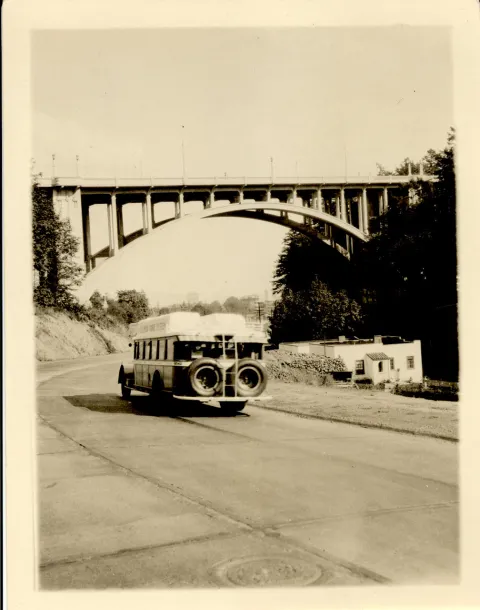Canyon Road
SW Canyon Rd., Portland, OR 97225 (link is external)

The Tualatin Valley was originally inhabited by the Atfalati Kalapuyan people. American and European colonization began in this area in the 1840s. They called the area Twality, a corruption of the original inhabitant's name. The first land claim was filed in 1847 at Chakeipi (translated as place of the beaver), one of the 24 Atfalati villages in the valley. The claim was originally called Beaver Dam and then later Beaverton. Grist and saw mills were built on the river.
Euro-American settlers, farmers, and entrepreneurs needed roads to connect them to Portland and in 1850 The Oregon Territorial Government created the Portland & Valley Plank Road Company to build a plank road, called Canyon Road, from Portland to the west end of the valley. It took nearly 10 years (and a new company!) to complete the road. In the meantime, the Atfalati, down to 60 members in 1851 (from 600 in 1842 and thousands precontact), was forcibly moved, first to Wapato Lake (near Gaston) and then in 1855 to the Grand Ronde Reservation.
Over time the plank road disappeared under a variety of paved roads. To follow its original path today, you'd start on Jefferson Street at the Vista Bridge, head west on Canyon Road and the Sunset Highway (US 26), head south on Oregon Route 8, and finally head west on the Tualatin Valley Highway. Canyon Road is credited with opening up Portland's economic future.
The bus in this picture is part of the Columbia Gorge System, which operated tourist transit from Portland through the Columbia Gorge from 1929-1932. The bus is about the pass under the Vista Bridge at the eastern end of Canyon Road.
Next Stop:
Get There From Here by:
Driving Directions(link is external)
Public Transportation(link is external)
Bike(link is external)
